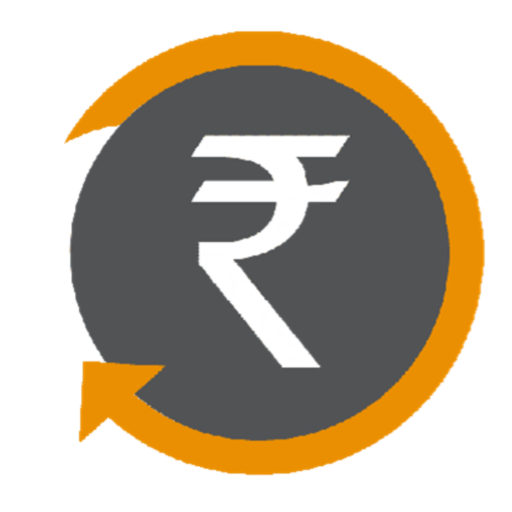How to Buy and Use RBI Digital Rupee in India?
How to Buy and Use RBI Digital Rupee in India? On 1 December 2022, the Reserve Bank of India (RBI) launched a digital rupee (e₹-R) in 4 Indian cities. Residents of Mumbai, Bengaluru, New Delhi, and Bhubaneswar can now use digital wallets provided by the partnering bank to exchange digital rupees. Moreover, you can keep this wallet on mobile or other devices for online transactions.
Digital rupee, also known as digital currency, is virtual money. It serves the same purpose as physical money. The value of digital rupee and physical money are the same, i.e. 1 digital rupee = Rs. 1 cash. The RBI issues digital rupee while the banks manage the distribution of the Central Bank Digital Currency (CBDC). According to the Central Bank’s guidelines, you can carry out digital rupee transactions with merchants and individuals.
How to buy RBI digital rupee?
RBI, or the Central Bank of India, has selected eight banks to take part in the phase-wise e-rupee pilot programme. State Bank of India, ICICI Bank, Yes Bank, and IDFC First Bank will comprise the first phase in the four cities mentioned above. Four other banks – Union Bank of India, HDFC Bank, Bank of Baroda and Kotak Mahindra Bank, will join the pilot for the second phase soon.
These eight participating banks have launched their digital rupee app to make transactions more accessible. The process to buy digital rupee is as follows:
- You need to visit the participating bank’s official app or website. Currently, only the 4 banks mentioned above are issuing digital rupee to users in 4 cities.
- Next, you need to register to use the e-rupee wallet.
- Banks will inform you when you are selected for the Closed User Group (CUG) via SMS and email to participate in the digital rupee pilot programme.
- After the registration is done, you have to load money into the e₹-R wallet. The e₹-R wallet is similar to a physical wallet but is in digital form on your phone.
- You can load money into the e₹-R wallet from the account linked to the bank or from various UPI apps.
- Once you load money into the wallet, you can start transacting in e-rupee.
You should note that the e-rupee is a digital version of your cash or paper money and not a cryptocurrency. So, you can make transactions using QR codes displayed at shops or malls to pay with an e-rupee.
How to use the digital rupee in India?
Take a look at the following points before you proceed with buying or making transactions with the digital rupee (e₹-R) pilot:
- The RBI issues the retail digital rupee as an electronic token.
- A closed user group (CUG) consists of participating merchants and customers. The e-pilot cover selected locations in CUG.
- The e-rupee will be issued in the same denominations, followed by paper currency or coins. It is a digital token of the prevailing money that will be distributed through banks as an intermediary.
- Your bank will offer a digital wallet that you can use on your smartphones or laptops for online transactions of e-rupee.
- You can opt for both person-to-person (P2P) and person-to-merchant (P2M) transactions using QR codes displayed at malls or shops.
- Though digital, the e₹-R comes with all features of physical cash like safety, settlement finality, trust, etc.
- You can convert the digital rupee into other forms of money like bank deposits, but it will not earn any interest.
- The e-rupee pilot will conduct a real-time assessment of the retail use of digital rupees, distribution, and the stability of complete creation. Furthermore, according to this assessment, the RBI will evaluate different uses and aspects of the digital token.
Know the benefits and features of the digital rupee
Though the Central Bank Digital Currency (CBDC) is different from cryptocurrency in all aspects, it can be compared with crypto in fields of benefits. One of the notable benefits of CBDC is that government bodies and other companies accept digital rupees as legal tender, means of payment, safe deposits, etc.
Let’s take a look at its benefits.
- The CBDC is a sovereign currency issued by the RBI in accordance with their monetary policy.
- You can easily convert digital money into cash or commercial bank money.
- As the digital rupee is a flexible legal tender, you can use it even if you don’t hold a bank account.
- It cannot be destroyed by tearing apart, burning, or other physical damage.
- Any other digital form of money cannot replace e-rupees.
- Digital money is equal to paper currency. Hence, it will last as long as your paper money last.
- Unlike cryptocurrency, the digital rupee is governed by the central authority. Thus, it has a low risk of being volatile and provides security to its user.
Types of RBI digital rupee to be launched in India
As per the Central Bank of India, two types of digital rupee will be launched in India, namely retail or general purpose (CBDC-R) and wholesale (CBDC-W). Non-financial consumers, private sectors, businessmen, etc., can use CBDC-R, while the use of CBDC-W is restricted to selected financial institutions such as interbank transfers.
Thus, RBI launches the digital rupee in India to offer a safe and hazardless digital experience during monetary transactions. Besides, it does not come with a risk of volatility. It is just a digital form of your own physical money.








